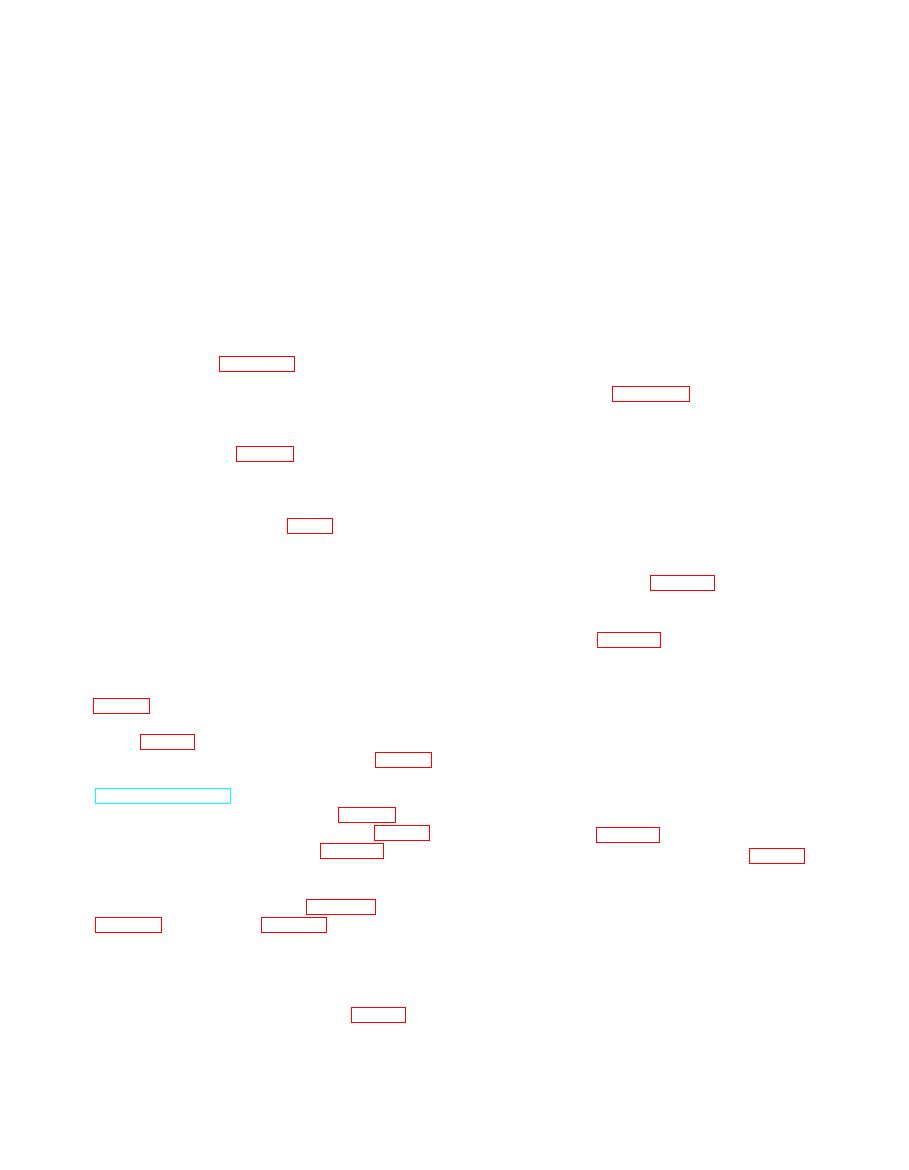 |
|||
|
|
|||
|
|
|||
| ||||||||||
|
|
 CAUTION
holes, clogging, and distortion; replace a damaged
When you push the piston and rod from
screen.
the block, be very careful the connecting
(4) Inspect the gears for chipped or broken
rod does not scratch or mar the
teeth, scoring, and wear. Replace any damaged gears.
crankshaft journals or cylinder walls.
(5) Inspect the gear pockets of the body. If you
find them scored or excessively worn, replace the
(12) You can now remove the assembled piston
pump.
(18), rings (20, 21, and 22), and connecting rod (15) by
(6) With the gears (12 and 15) and shafts (14
pushing piston assembly up through the top of the
and 16) position in the body, check for excessive play
cylinder block.
of the shafts and for contact of the gears with the pump
body. If you find these indications of wear, replace the
NOTE
pump.
Disassemble the pistons and piston rods
(7) Inspect all parts for cracks, distortion,
in sets, and keep the sets together. You
damaged threads, wear, and other damage; replace
must also be sure each piston and piston
damaged parts.
rod set is installed in the cylinder from
c. Reassembly and Installation.
which it was removed.
(1) Refer to figure 3-7 and reassemble the oil
pump. Check that the drive shaft turns easily without
(13) Refer to figure 3-11 (items 11 thru 22) and
binding when assembled.
disassemble the piston and connecting rod.
(2) Install the oil pump in the reverse order of
removal. To secure the pump firmly in place, aline the
b. Cleaning and Inspection.
locking setscrew (27, fig. 3-13) with the hole in the
(1) Discard and replace the piston rings.
pump body. After installing the setscrew, also install
(2) Clean all parts with cleaning solvent (fed.
the slotted head pipe plug (26). You may need to tap
the pump into position with a plastic hammer.
spec. P-D-680); dry thoroughly.
(3) Install the key (13, fig. 3-7) in the keyway of
(3) Inspect the pistons for wear, cracks, distor-
the drive shaft (14). Aline the keyway of the drive gear
tion, broken ring bands and distorted grooves, loose
(2) with the key (13) before securing the gear to the
piston pin-to-piston fit, and other damage; replace
shaft with the lock nut (1).
damaged pistons. Refer to table 3-1 for wear limits.
(4) Check the piston ring groove side clear-
ance, using new piston rings. If side clearance exceeds
a. Removal and Disassembly. With the engine
the limits given in table 3-1, replace the piston.
mounted on an engine overhaul stand, proceed as fol-
lows:
NOTE
(1) Remove oil filter from flywheel shrouding
Pistons and bearings are individually
checked and fitted to the cylinders at
(2) Remove the flywheel assembly from the
reassembly. Before reassembly, the
engine (para 3-5).
cylinder bores must be checked as
(3) Remove the flywheel alternator (para 3-6).
directed in paragraph c (1) below.
(4) Remove the carburetor and manifolds
(TM 5-4320-272-12).
(5) Inspect the connecting rods for cracks, dis-
(5) Remove the air shrouding (para 3-7).
tortion, and other damage; replace damaged connect-
(6) Remove the governor assembly (para 3-9).
ing rods. Refer to table 3-1 for wear limits.
(7) Remove the gear cover (para 3-10).
(6) Inspect the bearing shells (14, fig. 3-11) for
(8) Remove the idler gear and shaft (para 3-
scoring, wear, cracks, and other damage; replace dam-
11).
aged bearings. When replacing the bearing shells, you
(9) Remove the oil pan (para 3-12), oil filler
must replace a complete bearing consisting of two
halves.
(10) To ream the ridge of the top of each cylin-
der bore you will need a standard ridge reamer. Blow
NOTE
metal fragments from the cylinder with compressed
New bearing shells are smooth and
air.
highly polished. After a few hours of
(11) Remove hexagon nuts (11, fig. 3-1 1). Tap
operation, the bearing surface becomes a
leaden grey and develops minute craters
the ends of the cap screws (12) with a plastic hammer
so that the surface has an almost cellular
to remove them. Take care not to mar the threads.
appearance. This is normal, and is not an
Remove the connecting rod bearing cap (13) and bear-
indication of impending bearing failure.
ing shell (14) from the connecting rod.
|
|
Privacy Statement - Press Release - Copyright Information. - Contact Us |